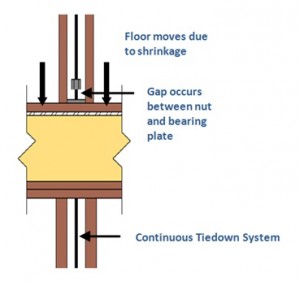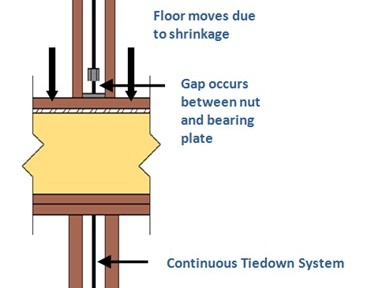Wood is a unique building material because its characteristics are dependent on the environment and its moisture properties, which can vary over time. Often, sawn lumber is delivered to the jobsite with relatively high moisture content. Over the life of the building, moisture content will decrease until equilibrium has been achieved. As moisture content drops, the wood members shrink. Most wood shrinkage occurs during the first six months of the building life and it’s an important design consideration.
is delivered to the jobsite with relatively high moisture content. Over the life of the building, moisture content will decrease until equilibrium has been achieved. As moisture content drops, the wood members shrink. Most wood shrinkage occurs during the first six months of the building life and it’s an important design consideration.
But I Don’t Design Cold-Formed Steel…
For the first half-dozen years of my professional career, my experience with cold-formed steel (CFS) consisted of sizing studs for non-structural walls and red-marking the bracing details on architectural plans. When the dotcom bubble burst, my firm needed to shift its focus from high-tech commercial and industrial to more multifamily design work. Several developers we worked with built with CFS, so in addition to designing condominiums instead of cleanrooms, I was designing CFS.
Less than 10% of engineers have any exposure to CFS design as part of their undergraduate education. OK – so this is based on an informal survey of about 50 colleagues, but I suspect if I were to hire a market research firm for lots of money, I’d pretty much get the same response.



